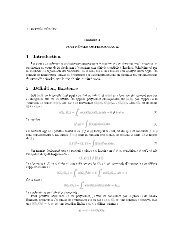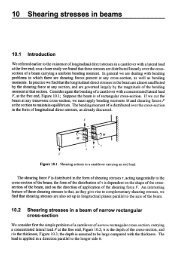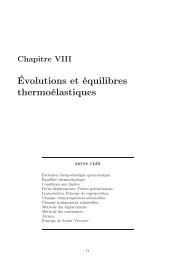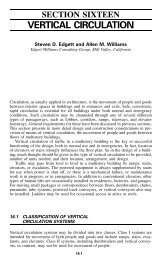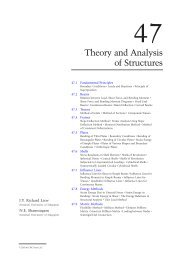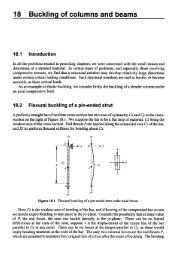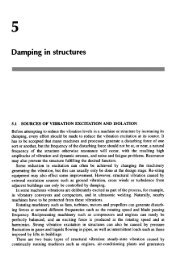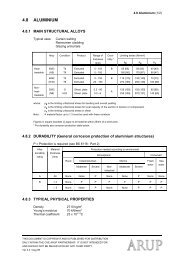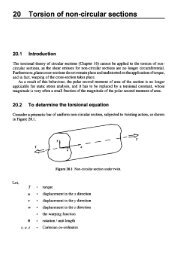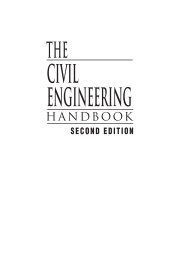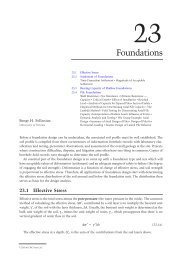Chapter 18: Groundwater and Seepage - Free
Chapter 18: Groundwater and Seepage - Free
Chapter 18: Groundwater and Seepage - Free
Create successful ePaper yourself
Turn your PDF publications into a flip-book with our unique Google optimized e-Paper software.
As the quantity of flow between any two streamlines is a constant, DQ, <strong>and</strong> equal to Dy (Eq. <strong>18</strong>.21)we haveEquations (<strong>18</strong>.22) <strong>and</strong> (<strong>18</strong>.23) are approximate. However, as the distances Dw <strong>and</strong> Ds become verysmall, Eq. (<strong>18</strong>.22) approaches the velocity at the point <strong>and</strong> Eq. (<strong>18</strong>.23) yields the quantity of dischargethrough the flow channel.In Fig. <strong>18</strong>.8 is shown the completed flow net for a common type of structure. We first note that thereare four boundaries: the bottom impervious contour of the structure BGHC, the surface of the imperviouslayer EF, the headwater boundary AB, <strong>and</strong> the tailwater boundary CD. The latter two boundariesdesignate the equipotential lines h = h <strong>and</strong> h = 0, respectively. For steady state conditions, the quantity<strong>Groundwater</strong> <strong>and</strong> <strong>Seepage</strong> <strong>18</strong>-9<strong>18</strong>.3 The Flow NetThe graphical representation of special members of thefamilies of streamlines <strong>and</strong> corresponding equipotentiallines within a flow region form a flow net. The orthogonal∆QB h + ∆hnetwork shown in Fig. <strong>18</strong>.4 represents such a system.Although the construction of a flow net often requires∆shtedious trial-<strong>and</strong>-error adjustments, it is one of the moreCAvaluable methods employed to obtain solutions for twodimensionaly + ∆ yflow problems. Of additional importance,even a hastily drawn flow net will often provide a check on∆wthe reasonableness of solutions obtained by other means.Noting that, for steady state conditions, Laplace’s equationDalso models the action (see Table <strong>18</strong>.1) of thermal, electrical,yacoustical, odoriferous, torsional, <strong>and</strong> other systems,FIGURE <strong>18</strong>.7 Flow at point.the flow net is seen to be a significant tool for analysis.point, according to Darcy’s law, will bek DhDyv ª --------- ª-------Ds D w(<strong>18</strong>.22)DQ ª k------ DwDhD s(<strong>18</strong>.23)60 ftA h = 16 ft h = h B50 fth = h 1h 2HGy BGHCC3h = 01Dh 3E2y EFFFIGURE <strong>18</strong>.8 Example of flow net.© 2003 by CRC Press LLC



